The Master/Slave Relationship
“I sho would ruther have slavery days back if I could have my same good Marsters… us sho did have de best Marster in de world. If ever a man went to heaven, Marse Alec did. I sho does wish our good old marster was livin now.”
Georgia Baker, Georgia Slave Narratives
“I was raised by one of the greatest men in the world. There was never one born of a woman greater than Gen. Robert E. Lee, according to my judgment. All of his servants were set free ten years before the war, but all remained on the plantation until after the surrender… My master, at his death, left me $360 to educate myself with.”
Rev. William Mack Lee, Robert E. Lee’s Servant, History of the Life of Rev. Wm. Mack Lee Body Servant of General Robert E Lee (1918)
The typical image of the master and slave relationship depicts a racist white owner wielding a whip and watching his slaves, ready to strike anyone who does not put forth a complete effort. He cares nothing about his slaves; he beats them regularly and forces them to do hard labor all the livelong day. He is willing to kill anyone who gets out of line as an example to others. He views the slave as a lesser evolved animal. The truth is much different. It was Southern theologians like Rev. Thomas Smyth in The Unity of the Human Races Proved to be the Doctrine of Scripture, Reason, and Science, and South Carolinian slavery apologists like the Rev. James Thornwell, who wrote in response to the claims of Northern scientists, like Samuel Morton and Louis Agassiz, that blacks were a separate lesser species from whites.
“It is a publick testimony to our faith, that the Negro is one blood with ourselves – that he has sinned as we have, and that he has equal interest with us in the great redemption. Science, falsely so called, [1 Tim 6.20] may attempt to exclude him from the brotherhood of humanity… by arguments which link them with the brute – but the instinctive impulses of our nature, combined with the plainest declarations of the word of God, lead us to recognize… in his moral, religious and intellectual nature – the same humanity in which we glory as the image of God. We are not ashamed to call him our brother.”
Rev. J. H. Thornwell, The Rights and the Duties of Masters
With our modern devaluing of humanity, the slaveowner held higher regard for his slave than we free men do for each other. While the “evil” masters did horrible things, they were the exception, not the rule. Slaves and their masters often had a good relationship that was beneficial to both parties. Just because slaves were legal “property” in the same way as a wagon does not mean the humane, often Christian master, would not view his slave as made in the image of God.
“They share our physical nature, and are bone of our bone and flesh of our flesh; they share our intellectual and spiritual nature ; each body of them covers an im- mortal soul God our Father loves, for whom Christ our Saviour died… they are men, created in the image of God, to be acknowledged and cared for spiritually by us, as we acknowledge and care for the other varieties of the race, our own Caucasian or the Indian, or the Mongol… whither we go they go; where we dwell they dwell; where we die and are buried, there they die and are buried; and, more than all, our God is their God… they patiently nurse us and ours in long nights and days of illness; our for-tunes are their fortunes; and our joys their joys; and our sorrows are their sorrows.”
Dr. Charles Jones, “Address to the First Confederate General Assembly of the Presbyterian Church,” Augusta, Georgia, Dec. 4, 1861, Quoted in R.Q Mallard’s Plantation Life Before Emancipation
To take an extreme example, what if, in time, the owning of pets is made illegal due to campaigning by animal rights activists. Let’s suppose the activists win over the majority opinion. People then might very well look back on us today, saying how evil we were because we thought we humans had more authority, and value, and the right to degrade animals to be our property. Therefore, just as slaveowners thought themselves superior to slaves, humanity today discriminates against other “lesser” life forms. People of the future would look back and say we must have viewed pets as unimportant and as degraded life. We must have been cruel owners since we did not allow these animals to choose their owners or freedom; we owned them. We bought and sold them at stores where they were kept in inhumane conditions and confined areas, and we chose the one that might benefit us to our desires. The owner decides when and what to feed the pet, whether it is allowed outside or not, and even walks their property with a leash. Physical discipline is used to keep the pet in line, and no light amount of verbal correction when it “misbehaves.” The pet is entirely dependent on its master. We have far more control over our animals than masters ever used on their slaves.
Similarly, think of a scenario like this concerning zoos and pet ownership: if in the future public opinion will be swayed, and they might declare emancipation as the only moral action to be taken. Those zookeepers are so cruel, the animals want to be free, but the zookeepers keep them against their will for their financial gain. They force them to do tricks, breed them, and decide how much and when they eat. It must be the millions made off of this unjust system that blinds them to this great evil. What cruel people the society must have been to accept and allow zoos without abolishing them. Two thousand and twenty-five America was an evil time. How could so many be blind to the moral outrage of such cruelty?
Yet, as owners, we do not mistreat our pets just because we legally own them. Zookeepers are among the most loving people to animals you would meet. The human dimension of slavery also made the love and care of the master greater than we give to our pets. A natural bond will occur among people in close contact for so long.
“In this society in which the infant son of the planter was commonly suckled by a black mammy, in which gray old black men were his most loved story-tellers, in which black stalwarts were among the chiefest heroes and mentors of his boyhood, and in which his usual, often practically his only, companions until he was past the age of puberty were the black boys (and girls) of the plantation – in this society in which by far the greater number of white boys of whatever degree were more or less shaped by such companionship… the relationship between the two groups was, by the second generation at least, nothing less than organic.”
W. J. Cash, The Mind of the South
In Slavery A Divine Trust; The Duty of the South to Preserve and Perpetuate the Institution as it Now Exists, slavery apologist Benjamin Palmer wrote of his slaves, “My servant, whether born in my house or bought with my money, stands to me in the relation of a child. Though providentially owing me service… he is nevertheless my brother and my friend, and I am to him a guardian and a father.” In The Duties of Masters to Their Servants, Rev. A.T. Holmes wrote, “We infer, first, the master should be a friend of his servant, and that the servant should know it.” Rev. H.N McTyeire wrote of slaves, “His [the master’s] interest is their interest. It is our cow, our horse, our hog, our field.” The self-interest of both parties plus daily interaction created a close relationship.
“When we make the labour the property of the same persons to whom the land and capital belong, self-interest inevitably impels them to share with the labourer liberally enough to preserve his life and efficiency…By this arrangement also, a special tie and bond of sympathy are established between the capitalist and his labourers. They are members of his family. They not only work, but live, on his premises.”
R.L. Dabney, A Defense of Virginia and the South
Owners kept the names of their slaves in their family Bibles, and the relationship was often more like extended family. Since the slaves were born in America, they grew up with, played with, worked with, and often ate with their future masters (the children of the current master). Children used family names, such as aunt or uncle, for the slaves. Slave narratives speak of future masters as children (these future white masters) being taught to use guns, fish, or hunt by their slaves and forming family-like relationships with them. Most white children on plantations were raised and influenced more by black women and children than whites. Slave women often worked in the house, cooking, cleaning, and also raising and schooling the master’s children. Future slave owner R.Q. Mallard called his caretaker servant his foster mother, who taught him to walk and talk, and she was as proud of his accomplishments as his biological mother was. Most slave owners had very few slaves and not only worked with them but carried on all activities of life with them. James Avirett wrote, “As the two came along together through childhood, boyhood, and all along through manhood, they were closely associated, having taken their first lessons together in riding, swimming, fishing, boat sailing, and in the various employments of outdoor life.”
In Up From Slavery, Booker T. Washington told of the genuine sorrow the slaves had when one of his former masters was killed. Second only, he said, to that in the “big house” (masters house) and “no sham sorrow but real.” The slaves begged to help take care of the other injured masters, wrote Washington. Joseph Ingraham attended the funeral of a master and wrote that, “slaves… anxiously crowded around the grave, burst into one simultaneous flood of tears, mingled with expressions of regret, sorrow, and affection.” He further wrote, “Planters, particularly native planters, have a kind of affection for their negroes, incredible to those who have not observed its effects… In health, they treat them with uniform kindness, in sickness with attention and sympathy.”
Slaves did not hold the legal status of a free man but were still members of the family. Slave owner Jane Gill of Missouri referred to her slaves as “my children.” Massachusetts native, pastor, and Harvard graduate Timothy Flint in his 1832 book The History and Geography of the Mississippi Valley, said of masters, “They are generally, and honorably, with some few exceptions, kind and indulgent masters to their slaves.” Studying the slave narratives in South Carolina, Belinda Hurmence said she found, “little to no anger towards masters” and former Alabama slave John Smith said, “My marster was de best in dis country.”How many of us today could say your boss was “the best in the country”? So great was the love that one Virginia slave is said to have sold himself back into slavery to free his former master from prison. After the Civil War, many slaves brought food and money to old masters who had lost all they had in the war’s aftermath. Mary Bryan wrote of the close relationship of a North Carolina slave with his late masters widow. Now living free in Boston, the former slave returned to North Carolina, purchased land and a house for her, and sent checks every three months in support.
These close bonds between the groups were common. Letitia Burwell described one urban establishment in the following terms: “The whole family were very much under the control of their servants… house, kitchen and premises being under the entire command of ‘Aunt Fanny’ the cook, a huge mulatto woman whose word was law, and whose voice thundered abuse if any dared to disobey her.”
In schools, the Confederacy taught students to be kind to their servants. The Confederate Reader textbook teaches students, “Do not be harsh, without cause, to servants, or those over whom you have authority.” The Geographical Reader for the Dixie Children by Mrs. M.B. Moore says, “Let all the little boys and girls remember that slaves are human, and that God will hold them to account for treating them with injustice.” The following quotes are a sample of common opinions slaves gave of their masters when interviewed.
“Seemed to love master and missus as much as they did their own mother and father… the way the children loved and trusted them wus a beautiful sight to see… Marster’s children and the slave children played together. I went around with the baby girl Carrie to other plantations visiting.”
Mary Anderson, North Carolina Slave Narratives
“Marse John use ter take me on his knee an’ sing… Marster loved de nigger chilluns on his plantation. I think slavery was a right good thing… Yes, slavery was a purty good thing.”
Emma Blalock, North Carolina Slave Narratives
“The rest of the family was all fine folks and good to me, but I loved Miss Ella better’ n anyone or anythin’ else in the world. She was the best friend I ever had. If I ever wanted for anythin,’ I just asked her an she give it to me or got it for me somehow.”
Betty Cofer, North Carolina Slave Narratives
“I haven’t anything to say against slavery. My old folks put my clothes on me when I was a boy. They gave me shoes and stockings and put them on me when I was a little boy. I loved them, and I can’t go against them in anything.”
Simuel Riddick, North Carolina Slave Narratives
“Our marster’s name was Cunel [Colonel] John Holiday…He an’ Miss Julia – dat was his wife – was mighty good to us an’ so was Marse Tom an’ Marse Ben, an’ Miss Maria an’ all… Mars Ben went afte’dat. He was jes old ‘nough to go but he went an’ fought jes de same. He come back when de war was over an’ dey was sho’ some rejoicin.’“
Wayne Holliday, Mississippi Slave Narratives
“My young marster used to work in de fiel’ wid us. He’d boss de niggers. Dey called ‘im Bud, but we all called ‘im Babe. Honey I sho’ did love dat boy. I loved him.”
Susan Snow, Mississippi Slave Narratives
“My white people dey good tuh me…. why, ah was jes lak dey’s chillun ah played wid em, et wid em an’ eb’ n slep wid ’em… neber had no wuck to do in dem days’ ceptin’ nursin’ de babies. ‘Twas jes’ lak play; twan no wuck… Wh’y we chillun user hab a time ’round ol’ Missus’ place. All us chillun uster git togeder an’ go in de woods tuh play. Yes, de white and black uns, too. Dem was good ol times, ah tel yuh, honey.”
Mrs. Candis Goodwin, Virginia Slave Narratives
“Marster Johnson was good to us cullud folks and he feeds us good He kept lots of hawgs, dat makes de meat. In de smokehouse am hung up meat enough for to feed de army, it looks like… if we’uns gets in trouble to come to him and he will help us, He sho’ do dat, too, ’cause de niggers goes to him lots of times and he always helps.”
Betty Bormer, Texas Slave Narratives
“When marster died, that was my fust real sorrow. Three years later, missus passed ‘way, dat was de time of my second sorrow. Then, I ‘minded myself of a little tree out dere in de woods in November. Wid every sharp and cold wind of trouble dat blowed, more leaves of dat tree turned loose and went to de ground, just lak they was tryin’ to follow her. It seemed lak, when she was gone, I was just lak dat tree wid all de leaves gone, naked and friendless. It took me a long time to get over all dat; same way wid da little tree, it had to pass through winter and wait on spring to see life again.”
Ezra Adams, South Carolina Slave Narratives

Jeb Smith is the author of four books, the most recent being Missing Monarchy: Correcting Misconceptions About The Middle Ages, Medieval Kingship, Democracy, And Liberty. Before that, he published The Road Goes Ever On and On: A New Perspective on J. R. R. Tolkien and Middle-earth and also authored Defending Dixie’s Land: What Every American Should Know About The South And The Civil War, written under the name Isaac C. Bishop. Smith has authored dozens of articles in various publications, including History is Now Magazine, The Postil Magazine, Medieval History, Medieval Magazine, and Fellowship & Fairydust and featured on various podcasts including The Lepanto Institute.

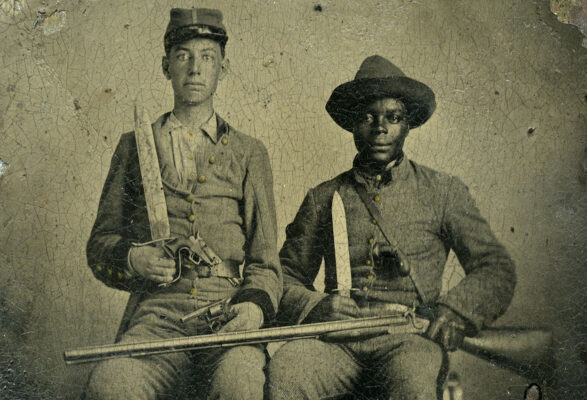
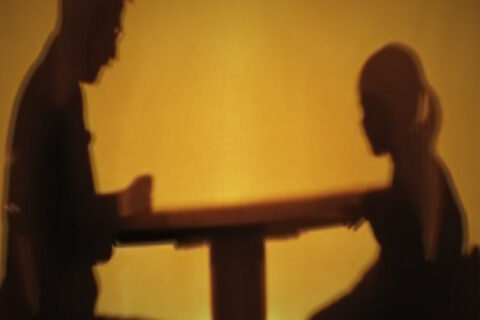
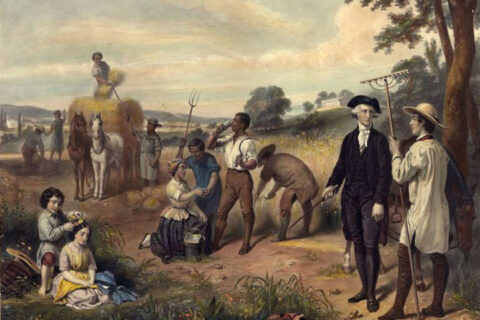
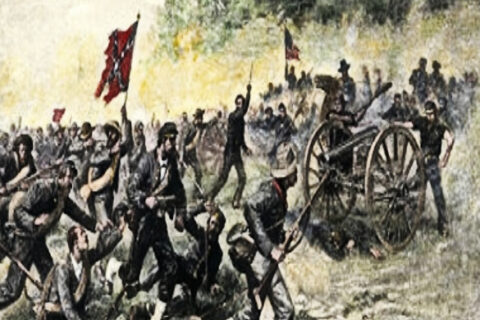
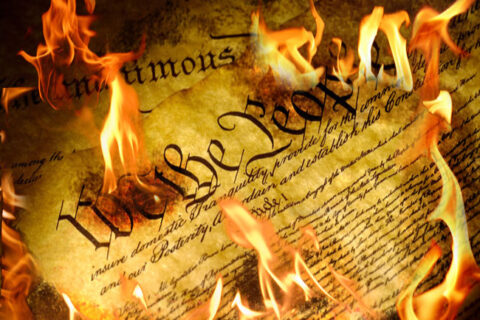
Good connection regarding the animal rights activists and the abolitionists. Like other species of libs they’re all for freeing the captives… provided that they won’t have to provide for them.
My reading of Southern history is that the problem for the slaves was when the old man died, and his drunken, ne’er-do-well of a son took over.
Can verify. Dads was born in N’Orleans in 1927 and raised on a dry farm in southern Arkansas. The main constant of his and his brothers’ lives was the farmhand, Dee Willy Gully, who had a house next to theirs and 9 children to go with it. At night, Dee Willy would play the guitar on the porch for all the kids after dinner. Dads and those kids were like brothers and sisters; Dee Willy was like a second father, since Grandpa was gone to N’Orleans so much, building its steel bridges in the Depression.
A nice endnote is when Dads and his two brothers were in their 80s, they mustered up from the states they lived in to go to the nursing home and “kidnap” Dee Willy, spending 3 days with him shortly before he passed away. Lordy, the stories they must’ve told.